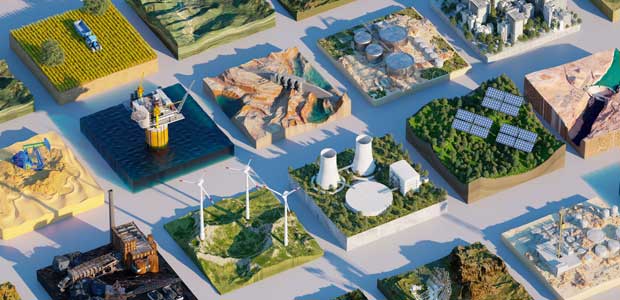Infralogic 1Q23 Fundraising report: Falling off a cliff
Infrastructure and renewable energy fundraising plummeted 95.5% in 1Q23 compared to the first quarter of 2022 — but because much of that decline was due to delayed final closes, activity is expected to bounce back as the year progresses.
Total capital raised at final close by 11 closed-end, unlisted infrastructure and renewable energy funds during 1Q23 was just USD 3.31bn, compared to the USD 74.26bn raised at final close by 24 funds in 1Q22. It was the smallest amount raised in any first quarter since 2012, when four funds raised USD 1.7bn, according to Infralogic data.
But the factors that drove fundraising off its first quarter cliff are technical and temporary, according to several sources. Indeed, much of the activity that was expected during 1Q23 has been delayed, suggesting fundraising will rebound later in the year.
A first quarter decline of some sort was expected. Fundraising fell sharply in 2H22 due to the denominator effect and broad economic uncertainty. Early this year, several sources predicted that trend would continue into the first quarter.
But the outlook for the rest of the year is more positive than the first quarter’s total suggests, according to sources and Infralogic data. At least USD 127bn is expected to be raised over the next three quarters, according to an estimate based on Infralogic data. Infralogic’s 1Q23 Fund Market Tracker published on 16 March estimated that 91 funds are actively in the process of raising at least USD 197.44bn.
Indeed, there are few signs that LPs have turned their backs on a long-held view that infrastructure and energy assets have long-term advantages over other types of investments.
“Pressures on LP allocations such as the denominator effect are mainly technical, and therefore short-term issues,” said a senior figure at a global placement agent. “Most LPs … have a much longer-term view of infrastructure and so will not ultimately be put off allocations.”
This was a view widely shared at the Infralogic Investors Forum 2023 New York. Speaking on the opening panel, Dylan Foo, partner and head of global infrastructure at Apollo Global Management, pointed to infrastructure's historical resilience as an asset class, as well as its potential for inflation protection, as reasons for continued optimism in fundraising.
When the values of non-infra assets in some institutional investors’ portfolios fall, their infra assets can grow as a percentage of their overall holdings to or beyond their allocation caps — limiting their ability to continue investing in infra assets. This phenomenon is known as the denominator effect.
Nonetheless, the scale of the 1Q23 downturn was unexpected. Final close figures for first quarters are often driven higher by overhang from the preceding fourth quarters, as managers wait for renewed allocations to close out vehicles.
In the first quarter of 2022, for example, two mega funds reached final closes that were delayed from 4Q21: KKR Global Infrastructure Investors IV and Stonepeak Infrastructure Fund IV, accounting for a total USD 31bn.
This year, in contrast, fundraising and economic conditions have forced many managers to push timelines out further than expected, as LPs have been more selective in their investment decisions.
Widespread delays
Target close dates have been pushed back across the market by vehicles ranging from mega- to mid-market funds.
Managers that have delayed final closes include Brookfield Infrastructure Partners (BIP), which pushed back the USD 5bn final close of its Infrastructure Debt Fund III first from late 2022 initially to 1Q23, then again until the end of 2023.
EQT similarly delayed the planned EUR 5bn final close of its EQT Active Core Infrastructure Fund to the middle of 2023 after originally eyeing a final close at the end of 2022 or in 1Q23.
Even mega fund managers’ flagship strategies have felt a crunch across the full fundraising cycle with delays occurring from launch to final close.
A Brookfield fund managed to raise USD 21bn of capital at first close in November after getting into the market early. However, a final close of Brookfield Infrastructure Fund V, which targets at least USD 25bn, is still several months away.
GIP, meanwhile, came to market slightly later, in September, and has experienced slower fundraising. The manager delayed the planned USD 10bn first close of its Global Infrastructure Fund V — originally expected by year-end 2022- first to February, then to March and finally to April. At the same time, it hired an external placement agent for the first time, demonstrating the difficulty of raising capital across the market.
EQT also delayed a planned first close of its flagship EQT Infrastructure Fund VI from the end of the first quarter to later in the year.
In the mid-market space, abrdn’s Core Infrastructure III — and flagship mid-market strategies from Impax, Vauban and Cube — have all been delayed to later in the year from the first quarter.
Most of the managers have already raised a significant portion of the funds, leading many market-watchers to conclude that their final closes will take place later in the year — boosting fundraising totals. However, few managers are willing to commit to solid timelines.
“What we’re seeing is GPs having to manage expectations with their investors,” said a senior figure at another placement agent. “With the amount of delays we’re seeing in the market, no one is willing to commit to a definite date.”
Most closes smaller
All funds that held a final close during the quarter were in the mid-market space or smaller. The Equitix-managed Rakiza Oman Infrastructure Fund was the largest to hold a final close, securing commitments of USD 1bn.
Comingled funds made up only a portion of the fundraising picture, with continuation funds, co-investment vehicles and managed accounts making up a significant proportion of capital raised at final close.
Vision Ridge Partners raised USD 700m for its SAF Annex Fund, which invests additional capital into the manager’s third fund, Sustainable Assets Fund III.
Meanwhile, ArcLight Capital Partners raised USD 407m for Arclight 3C SPV, a continuation vehicle set up to acquire Third Coast from ArcLight Energy Partners Fund V.
Pantheon and I Squared Capital also raised their own single asset vehicles. This partly reflects what many sources in the market say is a disconnect between buyer and seller expectations around valuations, which have been increasingly pressured.
On the comingled side, every comingled fund other than the Rakiza Oman vehicle that held a final close secured commitments of less than USD 500m.
Prominent fund closes include the USD 330m final close of Spanish manager Bestinver’s inaugural infrastructure fund.
Asper Investments secured USD 274.8m at final close for its Asper Duke fund, which targets sustainable district heating projects in the UK, while Infranity — formerly GGI — held a USD 406m final close of its latest debt fund.










